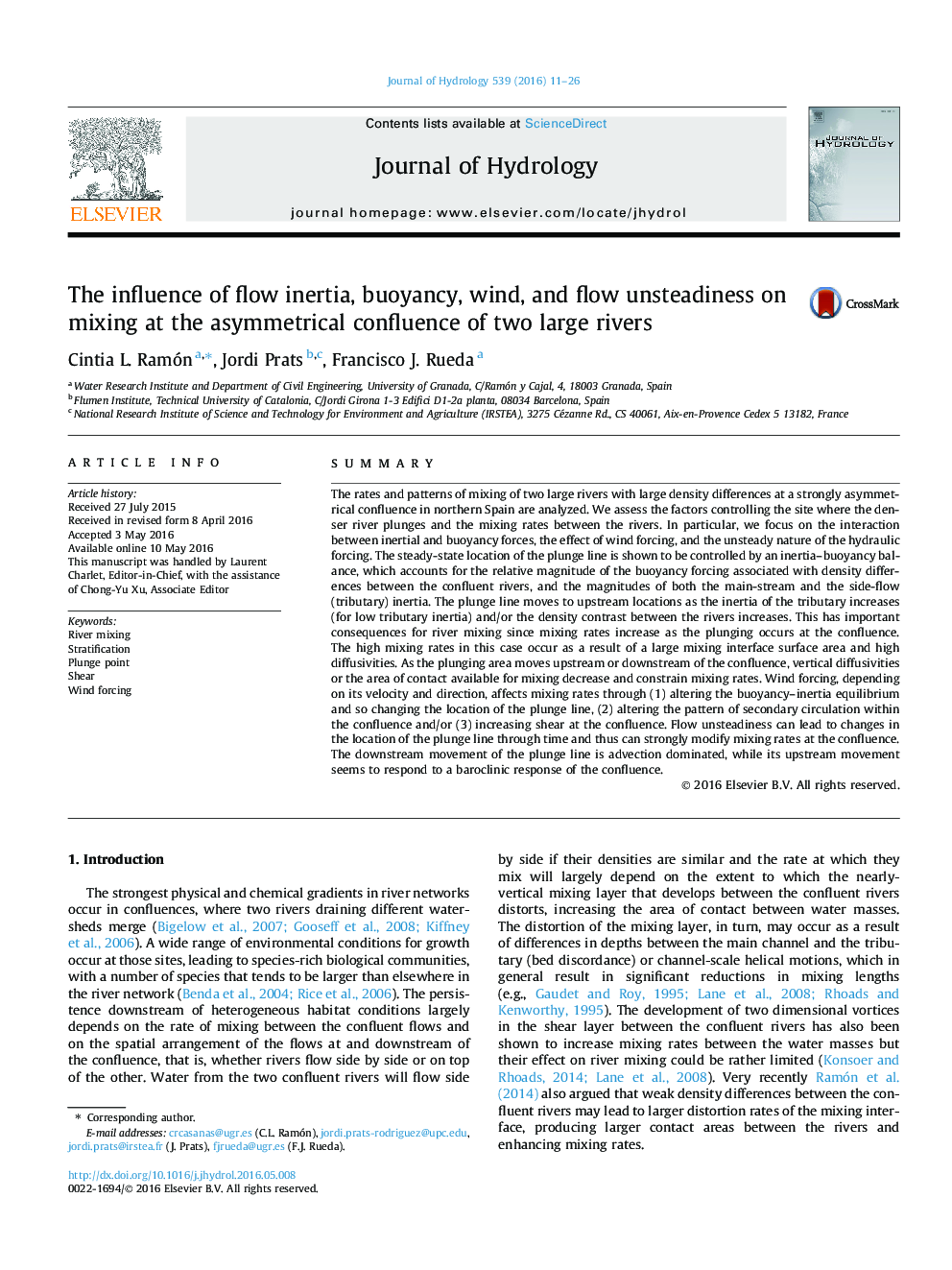| کد مقاله | کد نشریه | سال انتشار | مقاله انگلیسی | نسخه تمام متن |
|---|---|---|---|---|
| 6409901 | 1629913 | 2016 | 16 صفحه PDF | دانلود رایگان |
- Inertial and buoyancy forces control plunging at the confluence.
- River mixing is maximal if plunging occurs within the confluence.
- Wind forcing can alter the buoyancy-inertia equilibrium at river confluences.
- Winds opposite to the main-stream flow are most effective in increasing river mixing.
SummaryThe rates and patterns of mixing of two large rivers with large density differences at a strongly asymmetrical confluence in northern Spain are analyzed. We assess the factors controlling the site where the denser river plunges and the mixing rates between the rivers. In particular, we focus on the interaction between inertial and buoyancy forces, the effect of wind forcing, and the unsteady nature of the hydraulic forcing. The steady-state location of the plunge line is shown to be controlled by an inertia-buoyancy balance, which accounts for the relative magnitude of the buoyancy forcing associated with density differences between the confluent rivers, and the magnitudes of both the main-stream and the side-flow (tributary) inertia. The plunge line moves to upstream locations as the inertia of the tributary increases (for low tributary inertia) and/or the density contrast between the rivers increases. This has important consequences for river mixing since mixing rates increase as the plunging occurs at the confluence. The high mixing rates in this case occur as a result of a large mixing interface surface area and high diffusivities. As the plunging area moves upstream or downstream of the confluence, vertical diffusivities or the area of contact available for mixing decrease and constrain mixing rates. Wind forcing, depending on its velocity and direction, affects mixing rates through (1) altering the buoyancy-inertia equilibrium and so changing the location of the plunge line, (2) altering the pattern of secondary circulation within the confluence and/or (3) increasing shear at the confluence. Flow unsteadiness can lead to changes in the location of the plunge line through time and thus can strongly modify mixing rates at the confluence. The downstream movement of the plunge line is advection dominated, while its upstream movement seems to respond to a baroclinic response of the confluence.
Journal: Journal of Hydrology - Volume 539, August 2016, Pages 11-26
